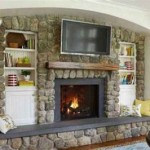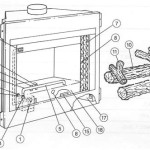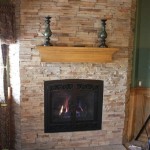```html
Antique Cast Iron Fireplace Log Holders: A Legacy of Function and Art
Antique cast iron fireplace log holders represent more than simple utilitarian objects. They are tangible links to the past, offering insights into historical heating practices, design aesthetics, and the craftsmanship of bygone eras. These holders, often found in various decorative styles, served the fundamental purpose of elevating logs in a fireplace, improving airflow and combustion. The aesthetic appeal of these pieces, combined with their inherent durability, has made them highly sought after by collectors and homeowners alike.
The history of cast iron fireplace log holders is interwoven with the evolution of fireplace design and heating technology. In the centuries before central heating, fireplaces were the primary source of warmth in homes. Consequently, optimizing the efficiency of the fireplace was a crucial concern. Log holders, also known as fire dogs, andirons, or firedogs, emerged as a solution. By raising the logs above the hearth floor, these devices facilitated better air circulation around the fuel, leading to more complete and efficient burning. This, in turn, reduced smoke and increased heat output.
Early examples of log holders were relatively simple in design, often consisting of two vertical bars or standards connected by a horizontal piece. Over time, however, these functional objects evolved into decorative elements, reflecting the prevailing artistic styles of their respective periods. The Victorian era, for instance, is known for its ornate cast iron fireplace accessories, often embellished with intricate floral motifs, animal figures, or classical designs. Earlier Georgian and Federal styles frequently incorporated simpler, more elegant patterns, emphasizing symmetry and clean lines.
Understanding the Design and Construction
The primary function of an antique cast iron fireplace log holder is to raise the logs off the hearth, creating an air space underneath. This promotes a more even and complete burn, resulting in less smoke and more efficient heat distribution. The design achieves this through two primary components: the uprights (the vertical supports) and the crossbar or grate. The uprights provide the elevation, while the crossbar or grate supports the logs, preventing them from rolling off.
Cast iron, the material of choice for these holders, is an alloy of iron and carbon that is melted and poured into molds. This casting process allows for the creation of complex shapes and intricate details. Once cooled, the resulting piece is remarkably strong and durable, capable of withstanding the high temperatures and constant use associated with fireplaces. The inherent properties of cast iron also contribute to its excellent heat retention, further enhancing the fireplace's efficiency.
The design variations in antique cast iron fireplace log holders are extensive. Some feature simple, geometric patterns, while others boast elaborate, figural designs. Common motifs include mythological creatures, such as griffins and dragons, as well as depictions of animals, plants, and human figures. The design often reflects the owner's taste and the style of the home's interior. Furthermore, the presence of maker's marks or foundry stamps can provide valuable insights into the piece's origin and historical context. Skilled craftspeople would often sign their creations, indicating a commitment to quality and artistry.
Identifying Authentic Antique Log Holders
Determining the authenticity of an antique cast iron fireplace log holder requires careful observation and some knowledge of historical manufacturing techniques. Several factors can help differentiate genuine antiques from modern reproductions. These include the material composition, the casting process, the design details, and the presence of wear and patina.
Authentic antique cast iron will typically exhibit a darker, more weathered appearance compared to modern cast iron. This is due to the natural oxidation process that occurs over time, resulting in a surface patina. The patina can range in color from a dark brown to a reddish-brown, depending on the environmental conditions and the level of care the piece has received. Modern reproductions often lack this characteristic patina, appearing more uniformly dark and less textured.
The casting process used to create antique cast iron objects also differs from modern methods. Antique cast iron was typically produced using sand casting, a process that involves pouring molten iron into molds made of sand. This process often resulted in slight imperfections, such as minor surface irregularities or mold lines. Modern casting techniques tend to produce smoother, more uniform surfaces. Therefore, the presence of subtle imperfections can be an indicator of an older piece.
Detailed examination of the design elements can also provide valuable clues. Authentic antique log holders often exhibit finer, more intricate details than modern reproductions. This is because the original molds were typically hand-carved by skilled artisans. The design may also reflect specific historical styles or motifs that were popular during certain periods. Examining the design for stylistic consistency and historical accuracy can help determine its authenticity.
Finally, searching for maker's marks or foundry stamps is an important step in the identification process. Many antique cast iron objects were marked with the maker's name, the foundry's location, or a date code. These marks can provide definitive proof of the piece's origin and age. However, it is important to note that not all antique cast iron objects were marked, so the absence of a mark does not necessarily indicate a reproduction.
Caring for and Maintaining Antique Cast Iron
Proper care and maintenance are essential to preserving the beauty and integrity of antique cast iron fireplace log holders. These objects are susceptible to rust and corrosion if exposed to moisture or harsh conditions. Therefore, regular cleaning and preventative measures are necessary to protect them from damage.
The first step in caring for antique cast iron is regular cleaning. This can be accomplished using a soft brush or cloth to remove dust, dirt, and soot. Avoid using abrasive cleaners or harsh chemicals, as these can damage the surface patina. For more stubborn stains, a mild soap and water solution can be used. Be sure to thoroughly dry the log holder after cleaning to prevent rust formation.
Applying a protective coating of wax or oil can help prevent rust and corrosion. A thin layer of paste wax or boiled linseed oil will create a barrier that protects the cast iron from moisture. Apply the wax or oil sparingly and buff to a smooth finish. This treatment should be repeated periodically, especially if the log holder is exposed to humid conditions.
If rust has already formed on the surface of the cast iron, it can be removed using a wire brush or steel wool. Gently scrub the affected areas to remove the rust, being careful not to damage the underlying metal. Once the rust has been removed, apply a rust-inhibiting primer and a protective coating of wax or oil to prevent further corrosion.
Proper storage is also important for preserving antique cast iron. When not in use, store the log holder in a dry, well-ventilated area. Avoid storing it in damp basements or garages, as these environments can promote rust and corrosion. Wrapping the log holder in a cloth or plastic sheet can also provide added protection from dust and moisture.
Restoring antique cast iron log holders can also breathe new life into these pieces, giving them a renewed sense of beauty and functionality. The restoration process typically involves cleaning, repairing any damage, and reapplying a protective finish. However, it is important to approach restoration with sensitivity, preserving as much of the original character and patina as possible. Over-restoration can diminish the value and historical significance of the piece.
```
Antique Cast Iron Fireplace Log Holder Basket

Antique Cast Iron Fireplace Log Holder

Vintage Cast Iron Fireplace Log Holder Basket

Antique Cast Iron Fireplace Grate Log Cradle Holder 1880s Era

Antique Cast Iron Fireplace Log Holder Olde Good Things

Antique Fireplace Log Holder Ember Screen

Antique Cast Iron Fireplace Grate Coal Box Basket Wood Log Holder Insert 195 20 Vintage Accessories

Sold At Auction Antique Cast Iron Fireplace Log Holder

Antique Vintage Cast Iron Fireplace Basket Grate Coal Box Wood Log Holder Insert

Antique Italian Cast Iron Fire Grate Fireplace Log Holder
Related Posts








